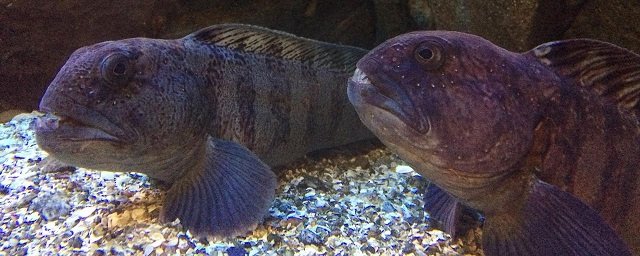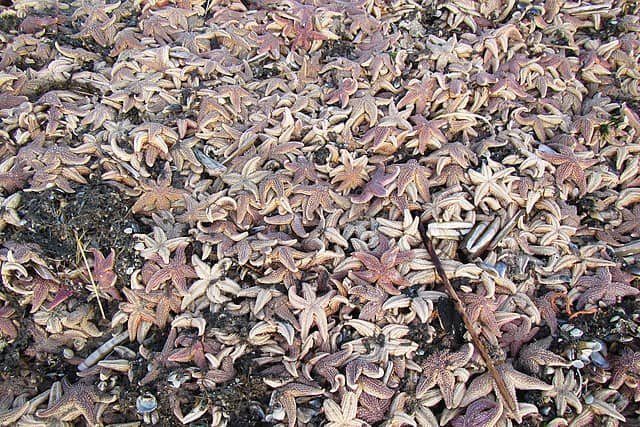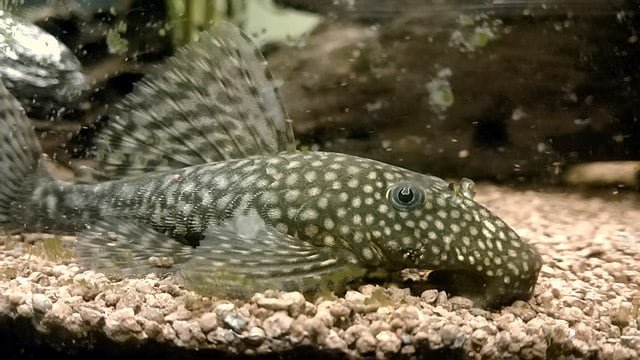
By The University of Gothenburg
In the future, farmed wolffish could start appearing on fish counters. However, a new thesis from the University of Gothenburg shows that this fish, with its delicate, firm flesh, needs somewhat different farming conditions compared to salmon.
The salmon farms of today have created a steady supply of fish in our supermarkets. The nutritional content of salmon, its rapid growth and low cost, have made it a popular fish in many households. But only farming one species can create vulnerabilities in terms of food security. Today Sweden imports more than 90 percent of the farmed fish we eat and a very high proportion of this is salmon.
A calm species able to withstand stress
“Growing only one type of fish isn’t sustainable in terms of diversity, of the market and in terms of food security. My thesis shows that we could also farm wolffish (Anarhichas lupus). It is a species that is naturally found in confined spaces close to the sea bed, where it forages. It is calm and can withstand stress, and from an animal welfare perspective, my studies indicate that wolffish has great potential for farming. However, it grows slightly slower and needs different feed,” says Dr Ida Hedén, from the Department of Biological and Environmental Sciences at the University of Gothenburg.
Popular food fish
Marine aquaculture has the potential to increase sustainable food production. However, like all other industrial food production, it has an environmental footprint and when humans farm animals for food consumption, those animals must be treated humanely.
“I looked at fish physiology to ensure animal welfare for farmed wolffish in sustainable aquaculture. This involved measuring the stress impact on the fish during handling. I also studied the intestinal function of the wolffish which can help us to understand the types of feed that work best and also the times of day the fish should be fed to ensure optimum growth,” says Ida Hedén.
Having previously worked as a chef, Dr Hedén appreciates wolffish on the plate too.
“It’s a fish with firm, white flesh that works well on the grill and with boiled potatoes and egg sauce.
Needs feed rich in protein
Unfortunately, there are some challenges before large-scale commercial fish farming could be launched. The optimum feed mix has not yet been established. In the wild, wolffish eat starfish and mussels. In other words, their feed presumably needs to be high in protein, which is one of the major challenges facing fish farming today, as fishmeal from wild-caught fish is a limited resource and protein from land-based plants can come into conflict with the human food supply.
In her thesis, Ida Hedén also studied a method for using shrimp and herring protein extracted from process water from the fish processing industry as feed ingredient to reduce the need for fishmeal. Feed containing shrimp protein in particular shows promising results for fish growth and also demonstrates how a waste product can be reintroduced into food production in a circular approach.
Stay Always Informed
Join our communities to instantly receive the most important news, reports, and analysis from the aquaculture industry.
Slower growth
However, the greatest challenge is that wolffish grow relatively slowly. With salmon, it takes 1–2 years from larva to harvestable fish. For wolffish, it takes 3–4 years.
“Wolffish breeding programs is needed to develop faster-growing strains of the fish, as was done with salmon. There is absolutely potential to farm wolffish, especially in land-based fish farms. Tanks on land offer good opportunities to control and create a good growing environment for the fish, and reduce the conflict with other coastal interests. But someone has to be the first and start a breeding programme. Thinking optimistically, that would give us commercially farmed wolffish in our fish counters in five years’ time,” says Ida Hedén.
Contact:
Ida Hedén
Doctor of biology with applied zoophysiology at the Department of Biological and Environmental Sciences at the University of Gothenburg, phone: +46 73-637 62 53, email: ida.heden@bioenv.gu.se
Reference (open access)
Integrative physiology as a tool towards good animal welfare and sustainability in aquaculture: Focus on intestinal function and health.
Editor at the digital magazine AquaHoy. He holds a degree in Aquaculture Biology from the National University of Santa (UNS) and a Master’s degree in Science and Innovation Management from the Polytechnic University of Valencia, with postgraduate diplomas in Business Innovation and Innovation Management. He possesses extensive experience in the aquaculture and fisheries sector, having led the Fisheries Innovation Unit of the National Program for Innovation in Fisheries and Aquaculture (PNIPA). He has served as a senior consultant in technology watch, an innovation project formulator and advisor, and a lecturer at UNS. He is a member of the Peruvian College of Biologists and was recognized by the World Aquaculture Society (WAS) in 2016 for his contribution to aquaculture.




